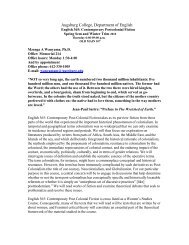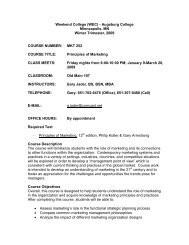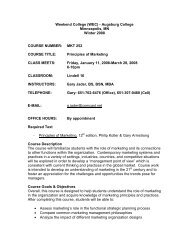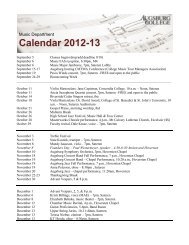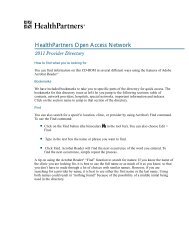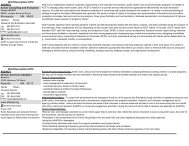You also want an ePaper? Increase the reach of your titles
YUMPU automatically turns print PDFs into web optimized ePapers that Google loves.
<strong>Lesson</strong> #8: Combinations<br />
Approximate lesson length: 1-2 days<br />
Precedes lesson #9<br />
Fits well with lesson #10<br />
Probability: What are the Chances?!<br />
<strong>Lesson</strong> Objectives:<br />
• Define event and outcomes<br />
• Discover a way to count the total possible combinations of rolling a die twice or three times<br />
• When rolling two dice, find the probability of rolling a 5 and then a 6<br />
Materials:<br />
• Pencil and paper<br />
Begin by asking each student to write down in their own words the definition of probability. Ask everyone<br />
to share and discuss their responses. Pose the question: What’s the probability of rolling a six when<br />
you roll 1 die? And a four? Two? One? (It’s 1 out of 6!) Why? (Because there’s six possible numbers<br />
and they’re all different!) Continue the discussion until you find students are making this comment confidently<br />
and understand what the probability of rolling a given number 1-6 is and why. At this point tell<br />
them that they already know the strategy for calculating any probability: Find out how many total possible<br />
outcomes there are, then count how many of the possible outcomes count as the event.<br />
Write this strategy on your own white board or paper as you talk it through with them. Ask the students<br />
to describe in their own words what they think ‘outcomes’ means and what ‘event’ means. They<br />
should be able to realize that in this case there are 6 total possible outcomes: rolling a 1, rolling a 2, rolling<br />
a 3, rolling a 4, rolling a 5, and rolling a 6. The event “rolling a six” only happens in one of the outcomes.<br />
Following the strategy, the probability of rolling a six is 1/6.<br />
Once the group is comfortable conceptualizing how we calculate the probability of rolling any single<br />
given number, pose this more difficult question: What is the probability of rolling a 5 on the first roll and<br />
then a 6 on the second roll? Open up a discussion about how we might go about figuring this out.<br />
To figure this out, we need to know how many possible combinations there are of rolling a die twice.<br />
Let the ordered pairs (A,B) represent rolling A first and B second. So for example (1,1) means I rolled a 1<br />
first and a 1 second. (2,4) means I rolled a 2 first and a 4 second. Students may come up with their own<br />
notation for this concept, but if they don’t, suggesting this method may be helpful to them.<br />
Ask the students to write down all the possible ways to roll a die twice. When I taught this lesson, every<br />
student began by writing down lots of random combinations. This led me to ask the question: Is there<br />
any way we can write down all of these combinations so that we can keep track of which ones we’ve accounted<br />
for and which ones we still need? Ultimately, making a table like the following is what emerged:<br />
51



